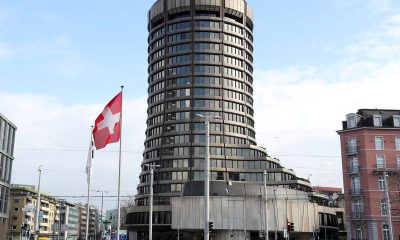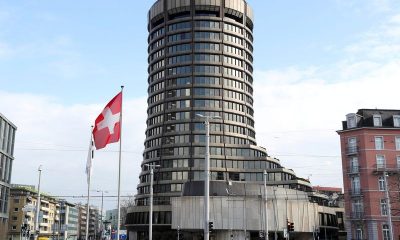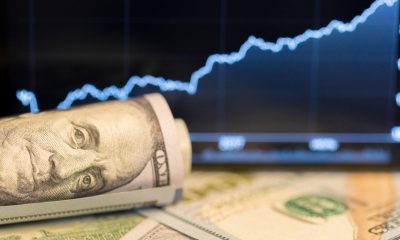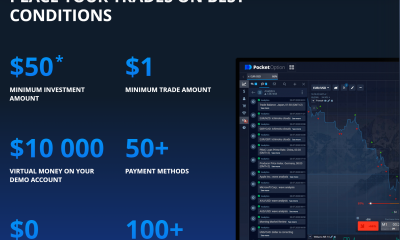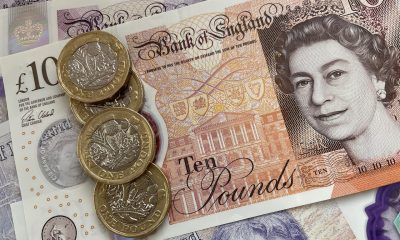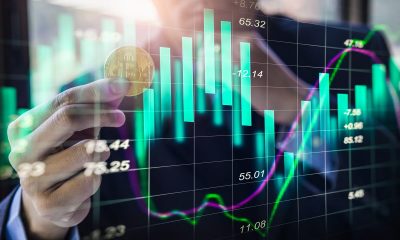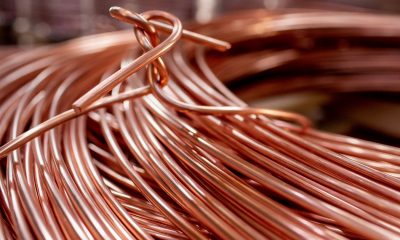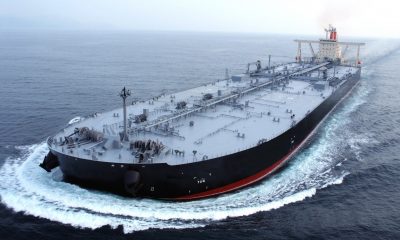Economy
Russian consumer inflation accelerates again in June
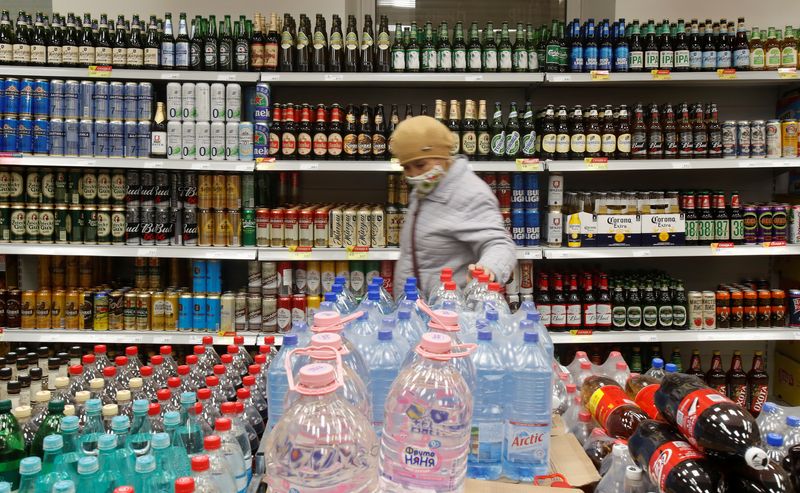
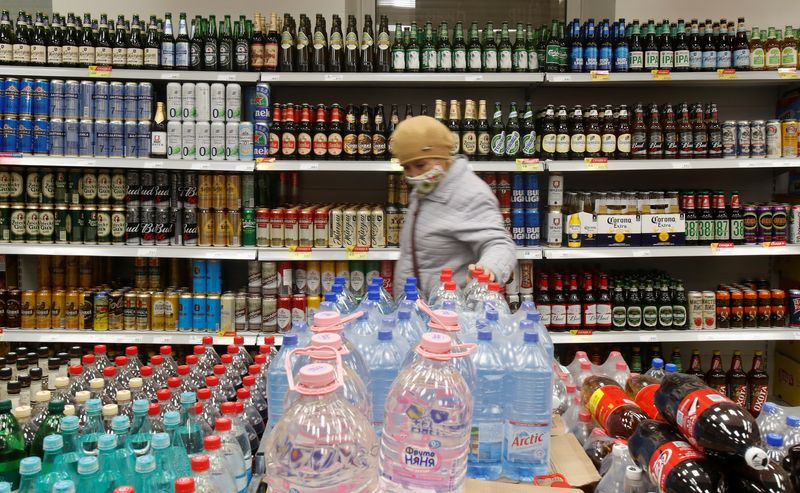
© Reuters. FILE PHOTO: A customer walks past shelves with bottles and cans of beer in a supermarket amid the coronavirus disease (COVID-19) pandemic in Moscow, Russia April 8, 2020. REUTERS/Maxim Shemetov
(Reuters) – Inflation in Russia accelerated in June, data from the state statistics service Rosstat showed on Wednesday, a little over a week before the central bank is expected to hike interest rates for the first time in more than a year.
After an emergency hike to 20% shortly after Russia invaded Ukraine in February 2022, the central bank steadily lowered rates to 7.5%, where it has held them since September.
But the Bank of Russia has become ever more hawkish since then and analysts polled by Reuters expect it to hike rates to as high as 8% on July 21, amid increased inflationary pressure due to a weaker rouble, labour shortages and high lending.
In June, annual inflation stood at 3.25% year-on-year, up from 2.51% a month earlier, the data showed. Analysts polled by Reuters had expected inflation at 3.3%.
On a monthly basis, the consumer price index (CPI) rose 0.37% in June after a 0.31% increase in May, the data showed, coming almost in line with analysts’ expectations of a 0.4% increase.
Separate Rosstat data released on Wednesday showed weekly consumer prices rose in early July.
In a different set of data published on Wednesday, the Economy Ministry said inflation was running at 3.59% on an annual basis, up from 3.35% a week ago.
Double-digit annual inflation hit Russia last year soon after it sent its armed forces into Ukraine on Feb. 24, 2022, a move that prompted sweeping Western sanctions.
Annual inflation in Russia has dropped below the central bank’s 4% target in recent months due to that high base effect, but is now climbing once more.
The central bank sees inflation ending this year at 4.5%-6.5% and is determined to bring the rate of price rises back to its 4% target in 2024.
Russian households regularly cite inflation as a key concern, with many having no savings after a decade of economic crises, while rising prices dragged living standards down across the country.
Rosstat gave the following details:
RUSSIAN CPI June 23 May 23 June 22
Mth/mth pct change +0.37 +0.31 -0.35
– food -0.01 -0.31 -1.10
– non-food +0.42 +0.34 -0.41
– services +0.83 +1.13 +0.88
Y/Y pct change +3.25 +2.51 +15.90
Core CPI y/y pct change +2.44 +2.12 +19.18
Economy
Russian central bank says it needs months to make sure CPI falling before rate cuts -RBC
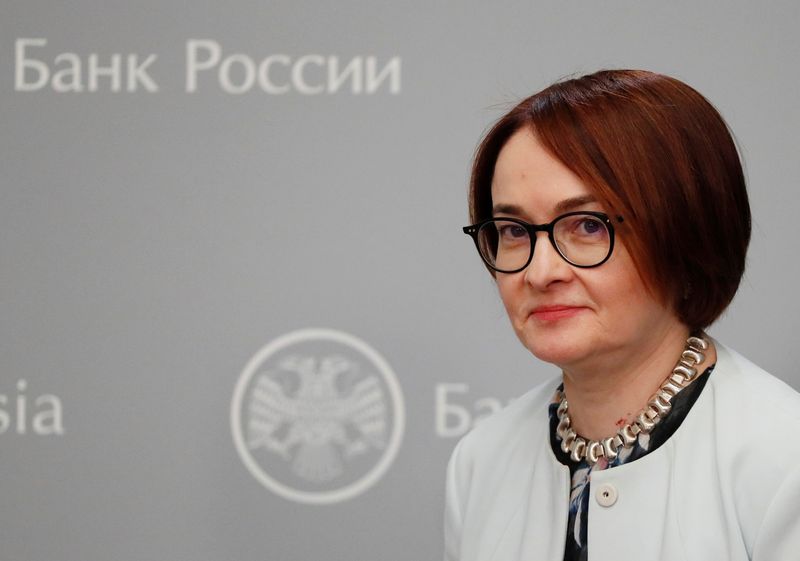
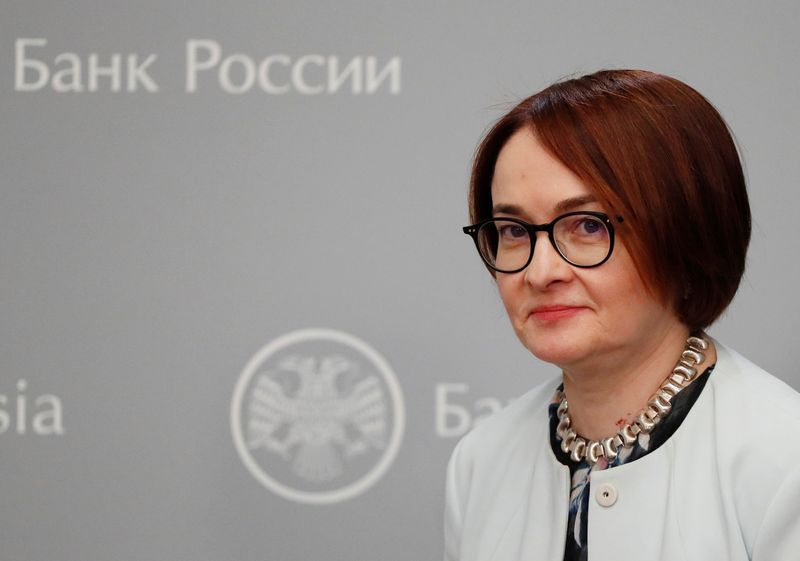
© Reuters. Russian Central Bank Governor Elvira Nabiullina attends a news conference in Moscow, Russia June 14, 2019. REUTERS/Shamil Zhumatov/File Photo
MOSCOW (Reuters) – Russia’s central bank will need two to three months to make sure that inflation is steadily declining before taking any decision on interest rate cuts, the bank’s governor Elvira Nabiullina told RBC media on Sunday.
The central bank raised its key interest rate by 100 basis points to 16% earlier in December, hiking for the fifth consecutive meeting in response to stubborn inflation, and suggested that its tightening cycle was nearly over.
Nabiullina said it was not yet clear when exactly the regulator would start cutting rates, however.
“We really need to make sure that inflation is steadily decreasing, that these are not one-off factors that can affect the rate of price growth in a particular month,” she said.
Nabiullina said the bank was taking into account a wide range of indicators but primarily those that “characterize the stability of inflation”.
“This will take two or three months or more – it depends on how much the wide range of indicators that characterize sustainable inflation declines,” she said.
The bank will next convene to set its benchmark rate on Feb. 16.
The governor also said the bank should have started monetary policy tightening earlier than in July, when it embarked on the rate-hiking cycle.
Economy
China identifies second set of projects in $140 billion spending plan
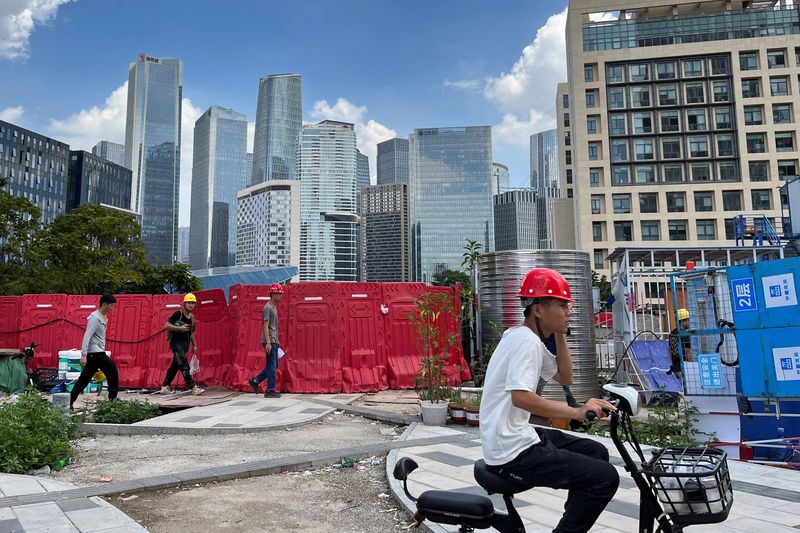
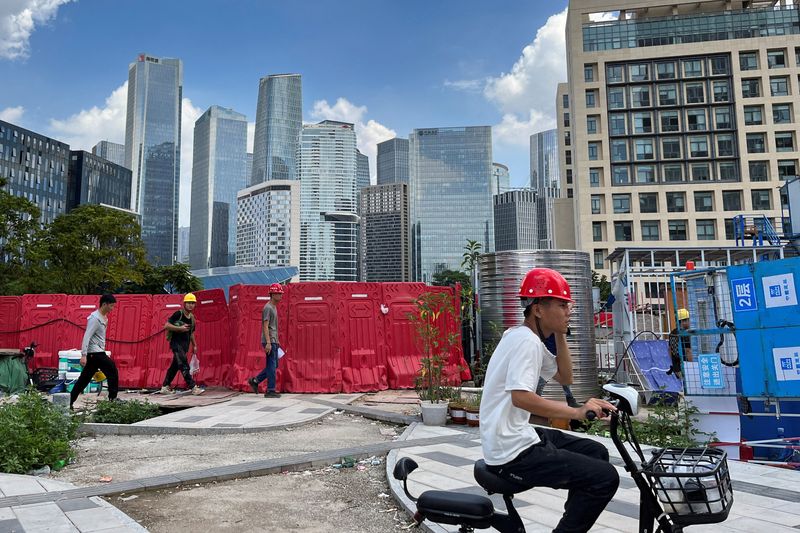
© Reuters. FILE PHOTO: Workers walk past an under-construction area with completed office towers in the background, in Shenzhen’s Qianhai new district, Guangdong province, China August 25, 2023. REUTERS/David Kirton/File Photo
SHANGHAI (Reuters) – China’s top planning body said on Saturday it had identified a second batch of public investment projects, including flood control and disaster relief programmes, under a bond issuance and investment plan announced in October to boost the economy.
With the latest tranche, China has now earmarked more than 800 billion yuan of its 1 trillion yuan ($140 billion) in additional government bond issuance in the fourth quarter, as it focuses on fiscal steps to shore up the flagging economy.
The National Development and Reform Commission (NDRC) said in a statement on Saturday it had identified 9,600 projects with planned investment of more than 560 billion yuan.
China’s economy, the world’s second largest, is struggling to regain its footing post-COVID-19 as policymakers grapple with tepid consumer demand, weak exports, falling foreign investment and a deepening real estate crisis.
The 1 trillion yuan in additional bond issuance will widen China’s 2023 budget deficit ratio to around 3.8 percent from 3 percent, the state-run Xinhua news agency has said.
“Construction of the projects will improve China’s flood control system, emergency response mechanism and disaster relief capabilities, and better protect people’s lives and property, so it is very significant,” the NDRC said.
The agency said it will coordinate with other government bodies to make sure that funds are allocated speedily for investment and that high standards of quality are maintained in project construction.
($1 = 7.1315 renminbi)
Economy
Russian central bank says it needs months to make sure CPI falling before rate cuts -RBC
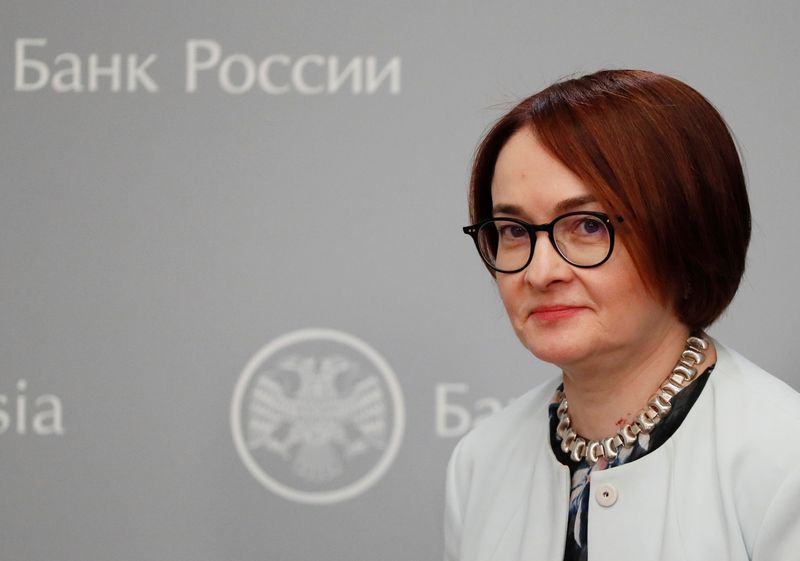

© Reuters. Russian Central Bank Governor Elvira Nabiullina attends a news conference in Moscow, Russia June 14, 2019. REUTERS/Shamil Zhumatov/File Photo
MOSCOW (Reuters) – Russia’s central bank will need two to three months to make sure that inflation is steadily declining before taking any decision on interest rate cuts, the bank’s governor Elvira Nabiullina told RBC media on Sunday.
The central bank raised its key interest rate by 100 basis points to 16% earlier in December, hiking for the fifth consecutive meeting in response to stubborn inflation, and suggested that its tightening cycle was nearly over.
Nabiullina said it was not yet clear when exactly the regulator would start cutting rates, however.
“We really need to make sure that inflation is steadily decreasing, that these are not one-off factors that can affect the rate of price growth in a particular month,” she said.
Nabiullina said the bank was taking into account a wide range of indicators but primarily those that “characterize the stability of inflation”.
“This will take two or three months or more – it depends on how much the wide range of indicators that characterize sustainable inflation declines,” she said.
The bank will next convene to set its benchmark rate on Feb. 16.
The governor also said the bank should have started monetary policy tightening earlier than in July, when it embarked on the rate-hiking cycle.

 Forex3 years ago
Forex3 years agoForex Today: the dollar is gaining strength amid gloomy sentiment at the start of the Fed’s week

 Forex3 years ago
Forex3 years agoUnbiased review of Pocket Option broker

 Forex3 years ago
Forex3 years agoDollar to pound sterling exchange rate today: Pound plummeted to its lowest since 1985

 Forex3 years ago
Forex3 years agoHow is the Australian dollar doing today?

 Cryptocurrency3 years ago
Cryptocurrency3 years agoWhat happened in the crypto market – current events today

 World3 years ago
World3 years agoWhy are modern video games an art form?

 Commodities3 years ago
Commodities3 years agoCopper continues to fall in price on expectations of lower demand in China

 Economy3 years ago
Economy3 years agoCrude oil tankers double in price due to EU anti-Russian sanctions

